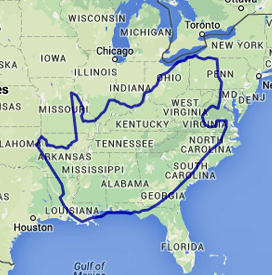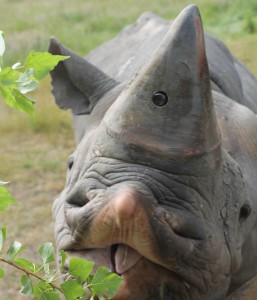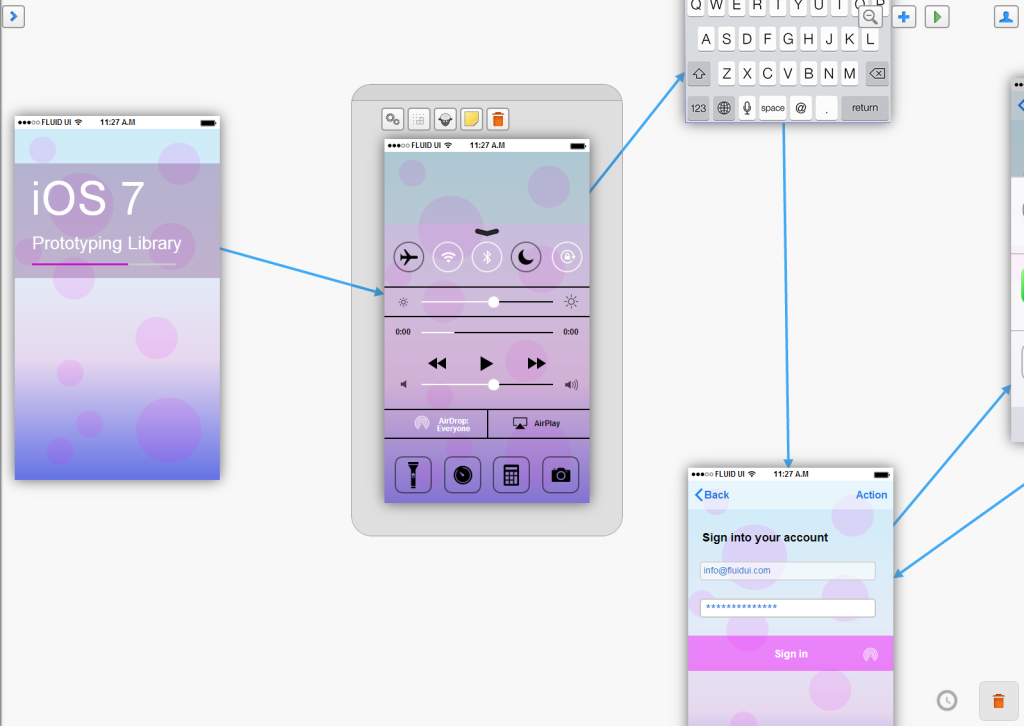We geeks love our blinking lights and shiny metal objects – but when our geekery is used to protect animals, it gets moved up on the warm fuzzy scale quite a bit. The poaching of rhino horns is a lucrative business for those who avoid getting caught. As rhino populations get depleted, the going rate for rhino horns naturally increases. In most locations in Africa, poaching is a ‘shoot on sight’ crime. Game officers in the field shoot to kill poachers when they are setting traps or actually harvesting parts from their kills and everything in between. But like all stupid criminals, they are willing to take the risk because the rewards are high – and they think they can avoid detection. And no worries here for our more sensitive geeks – I’m not sharing any images or video of slaughtered or mutilated animals here. We see enough as it is. This is science and geekery joining hands to make poachers extinct instead of our endangered wildlife.
I’ve had the rare opportunity to actually pet the horn of a living rhino. The rhino was raised by people since birth, so very taken with people and while visiting Fossil Rim Wildlife Center in Glen Rose, TX, I called her over to the fence near a walking trail. There are several layers of fences to protect people from these behemoths, so I needed her cooperation. Stretching my hand as far as it would go, and the rhino stretching her neck as far as she could, I could touch her horn. Having heard it was ‘just matted hair,” I was not prepared for what I felt. The texture was rough – but more importantly, it was HOT. There is a big blood supply running through that horn – at least at the base, and you can feel all her body heat radiating through the horn – which I suppose acts a bit like a heat sink for this species. Some conservationists in Africa have surgically de-horned some rhinos in an effort to make them less attractive to poachers – but a recent endeavor by Protect has re-thought this and is using technology to allow the rhinos to keep their ornamentation while simultaneously using it as poacher surveillance.
While there is a blood supply going through parts of the horn, most of it is ‘dead’ hair-like tissue that has no nerve endings. While they can feel you ‘petting’ their horn through vibration, drilling a hole into the front of the horn to install some tech causes no pain to the animal and helps to identify and capture the poachers who attempt to profit from the sale of animal parts.

South Africa is HUGE. Poachers have used this to their advantage, slaughtering rhinos at a rate of 1 every 7 hours. Technology has reduced their ability to ‘get lost in the crowd’ to almost zero, thanks to the Project Rapid initiative by Protect.
Every 7 hours, a rhino is poached somewhere in South Africa – and the area is vast, as you can see in this boundary overlay of the country laying over the United States. The anti-poaching forces cannot be everywhere – which is what the poachers are counting on. Thanks to lots of geeky tech, however, poachers will no longer be able to use this to their advantage. Helicopters can travel at over 100 miles per hour, easily overtaking people trying to escape in vehicle.
Protect uses not only cameras, but GPS locators and heart rate sensors inside the rhino’s horn. Their effort, called Project Rapid, ensures a rapid response to a poaching incident. When a rhino is poached and its heart stops, this triggers an alarm that is broadcasted via satellite to control centers that monitor movements of these endangered animals. When the alarm is triggered, people monitoring the control center access the onboard horn camera to confirm what is going on… are they seeing lions or people with guns? When a poaching incident is confirmed, rangers are dispatched via helicopter to the precise location. There is no time and no place for these people to go. Today, people in this field – those that protect wildlife, must have their faces shielded and identities protected. Poaching is a cutthroat business and anti-poaching personnel have been murdered in the course of their jobs. Technology has turned the tables on these poachers. There is no way to know until they have already reached the fallen animal whether or not they have onboard surveillance installed. The goal is to get all rhinos living in the wild fitted with these gizmos so that poachers will have to find another way to find a living. The risk is quickly outweighing the possible rewards – because poaching a camera-enabled rhino gives you a 100% chance of being caught and killed. Poached horns and tusks are burned on site, so that no one benefits from the death of these animals.
You can learn more about Protect’s Project Rapid on Facebook, Twitter and their website.




